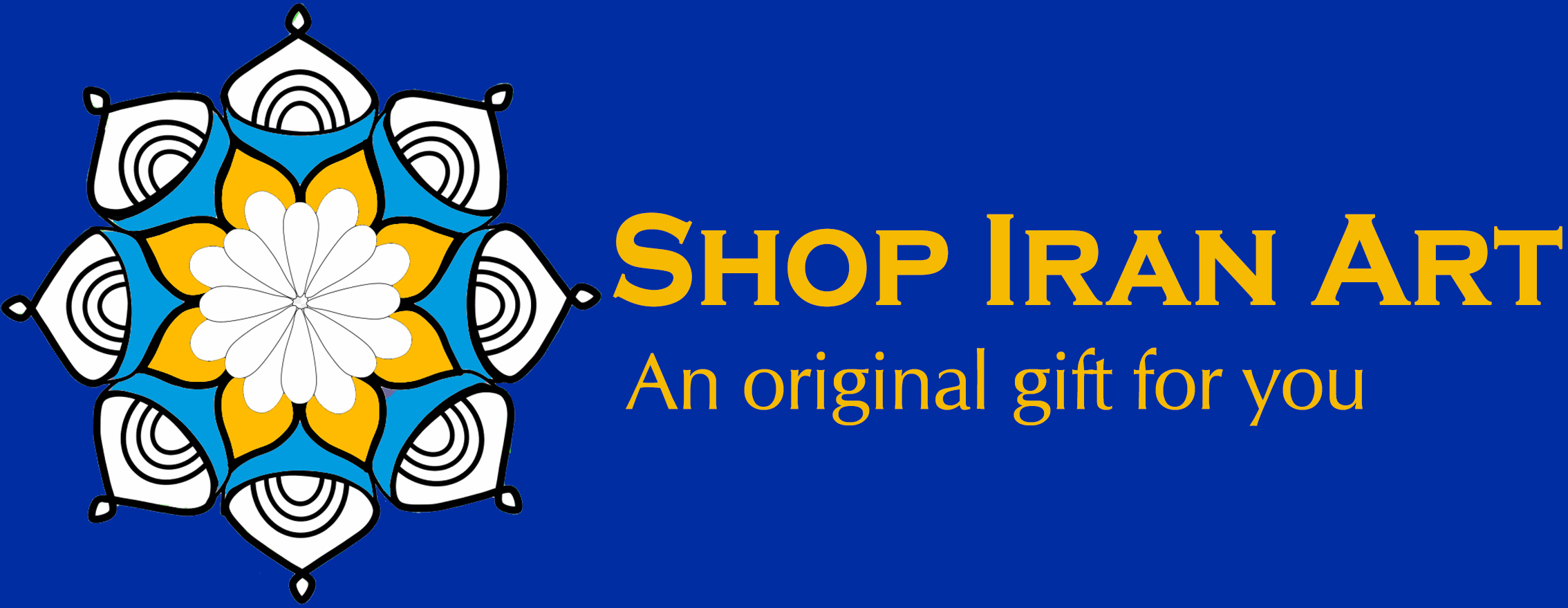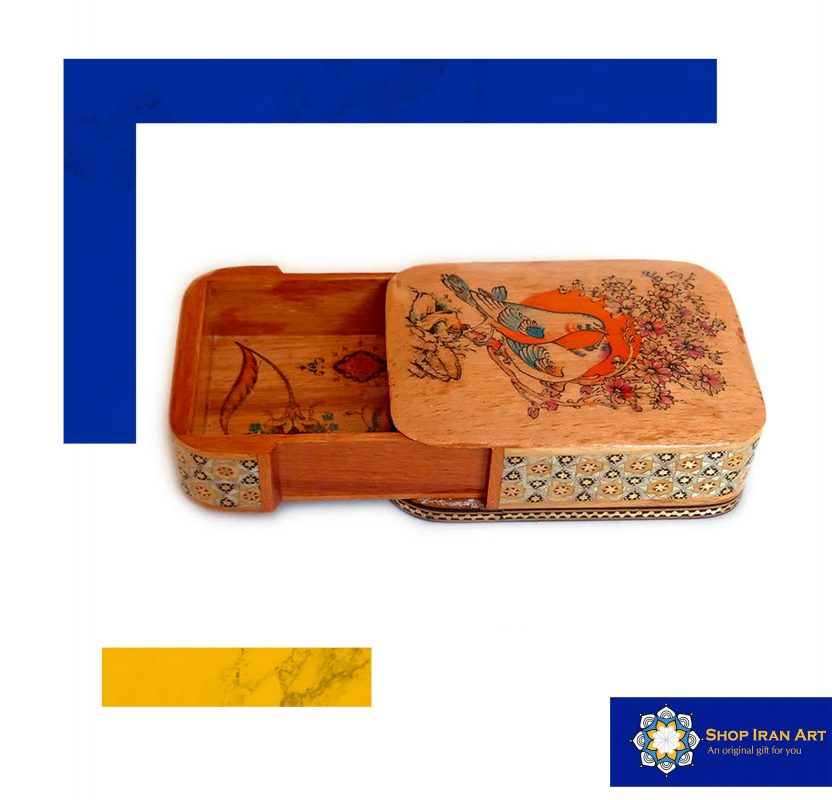Sin categorizar
Difference Between Marquetry And Inlay
What is the technique of marquetry and inlay?
The art of inlay has been known to mankind since ancient times. For inlay, you can use different materials (ceramics, marble, metal, etc.), but one of the most malleable materials is wood. Therefore, wood inlay on wood ( marquetry and intarsia ) is very popular among craftsmen.
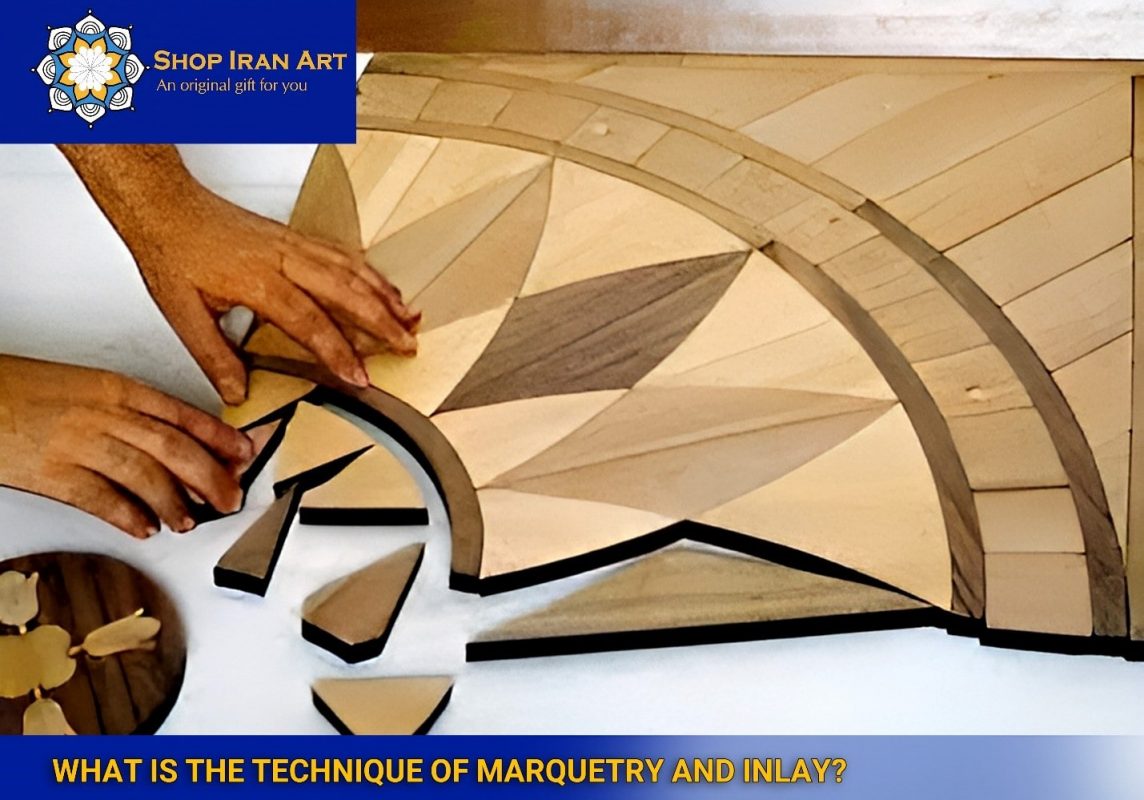
Inlay
Inlay (Late Latin incrustation – lit. covering with bark) – decoration of products and buildings with patterns and images from materials that differ from the main surface. Marble, ceramics, various metals, wood, mother-of-pearl, and ornamental stones are used for inlay. The pieces that make up the pattern are cut into the base.
Some types of inlay have separate names: intarsia – wood inlay on wood, marquetry – veneer inlay (intarsia and marquetry can be used to decorate an object or can be used independently, both techniques require a base). A notch is a type of inlay with metal on metal, as well as metal on wood, bone and horn. The method in which the elements of the mosaic set are cut into the thickness of the base is also called intarsia.
Inlay appeared in the Ancient East. Initially, she highlighted the most important details of the decorated objects: the eyes of statues and busts and various architectural details. Later, already in ancient Greece and Rome, inlay becames one of the ways to finish products made of a single-color material, such as white marble.
This art reached a high level of development in the 11th-13th centuries. In Italian architecture. Using ancient traditions, the masters of the Italian Renaissance decorate the white-stone buildings with rich patterns and numerous panels made of multi-colored marble and precious stones.
Currently, an inlay is used to design applied objects that surround a person in everyday life. The most interesting is the so-called “Florentine mosaic”, used to decorate furniture and household items. It is made from thin plates of multi-colored stones – jasper, malachite, rhodonite, and lapis lazuli.
marquetry
The art of marquetry originated in antiquity. Already on items from the tomb of the Egyptian pharaoh Tutankhamun, you can see inserts of cedar and ebony. Marquetry (from the French marque – to mark, line) is a type of mosaic on wood in which a mosaic set is made from pieces of veneer of different types of wood. Mosaic elements are cut into the veneer that serves as a background, fixed with paper smeared with glue, and, together with the background, glued to the surface of the product.
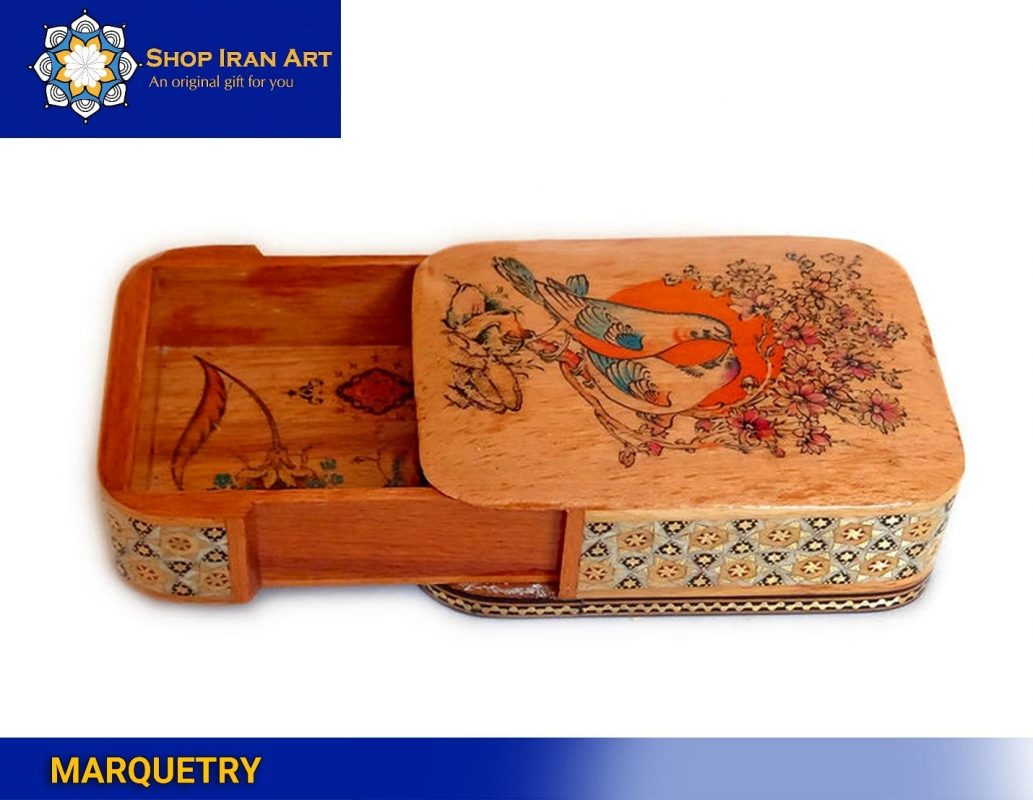
The appearance of marquetry became possible only after the invention in the second half of the 16th century. machine for the production of sawn veneer. Since that time, they began to veneer furniture made from local inexpensive wood species with a veneer of valuable imported wood species (black, mahogany, rosewood). At the beginning of the XVI century. marquetry technique is distributed in Germany, Holland, and France. It was widely used to decorate interiors and furniture. But already in the 18th century, domestic masters from serfs appeared.
Marquetry to order you can find on our website; shopiranart.com
Two processes are combined in marquetry: intarsia – inserting pieces of veneer of a different type of wood or a different color into the background veneer according to a specific pattern, and veneering – gluing the entire set onto the surface of the product to be decorated. In addition to inserting mosaic elements into the background veneer, there are other ways to make marquetry.
The marquetry technique reached its peak in the 18th century. It was widely used to decorate interiors and furniture. The use of thin veneer plates made it possible to decorate with mosaic sets not only flat but also curved surfaces.
Mosaic made of wood has high decorative qualities. With the warmth of color, the richest natural pattern, and the soft noble tones of wood, it attracts the attention of people, delivering great aesthetic pleasure.
Tracing the evolution of the art of marquetry, one can see how, gradually, from the utilitarian, applied direction, works stand out that have an independent artistic value, which has acquired the properties of a painting as a form of fine art. All this allows us to talk about the formation of a new, independent type of fine art – marquetry painting. Compared to other types of painting, the characteristics of marquetry paintings are associated with the artistic and plastic qualities of wood. Paints can be mixed, obtaining different color shades, and applied gently with the finest transitions from color to color. In marquetry, the image arises from the use of a natural palette – the colors, textures, and energy of the veneer of various types of trees. Nature itself, as a Great Master, gives you a beautiful palette of wood.
So, what does the master do to get backgammon or a marquetry box as a result:
First, the pattern that will be depicted on the product is determined. A picture, a photograph, an image in a newspaper or the Internet is taken – yes, any picture. Based on this picture, a preliminary layout is drawn. The layout may not be 100% consistent with the original material – many details are added and changed by the master during the drawing process to add expressiveness to the finished product.
Next, the finished sketch is scaled to the requirements of the finished product and transferred to the graph paper. Based on how complex the finished work should be, the master blends this sketch into darker and lighter details with up to a hundred halftones. At the next stage, each halftone has its veneer. Often, a true artist of his craft selects the veneer having already put together the big picture in his mind. And the criteria, in this case, is no longer the type of wood, but the tone and orientation (pattern) of the fibers.
In the next step, the details of the finished layout are transferred to the veneer sheets. First, the main background is made, into which smaller details are then cut. In the vast majority of cases for Russia, the background is made of “mahogany” or “walnut”. It’s just that these words are “on the tongue” of everyone, and it’s easier to convey the value of this or that product. Veneer with the name “mahogany” or “walnut” does not exist. These are the categories of veneer: walnut is European, sometimes American, sometimes Far Eastern; again, it is important which part of the nut is used – the root or the stem wood. With mahogany, the situation is even more interesting: mahogany is the collective name for a group of different woods.
In the vast majority of cases, the elements of patterns in products made using the marquetry technique are cut out manually with a knife. Moreover, there is a serious difference between cutting out parts from hard veneer and fragile wood veneer and between cutting simple geometric shapes and arbitrary curves. To hide the joints of the parts, the edges of the veneer are cut not at a right angle, but with a slight slope. Knowing all the nuances of how to tilt the knife and how to distribute the effort so as not to tear the precious wood distinguishes true masters.
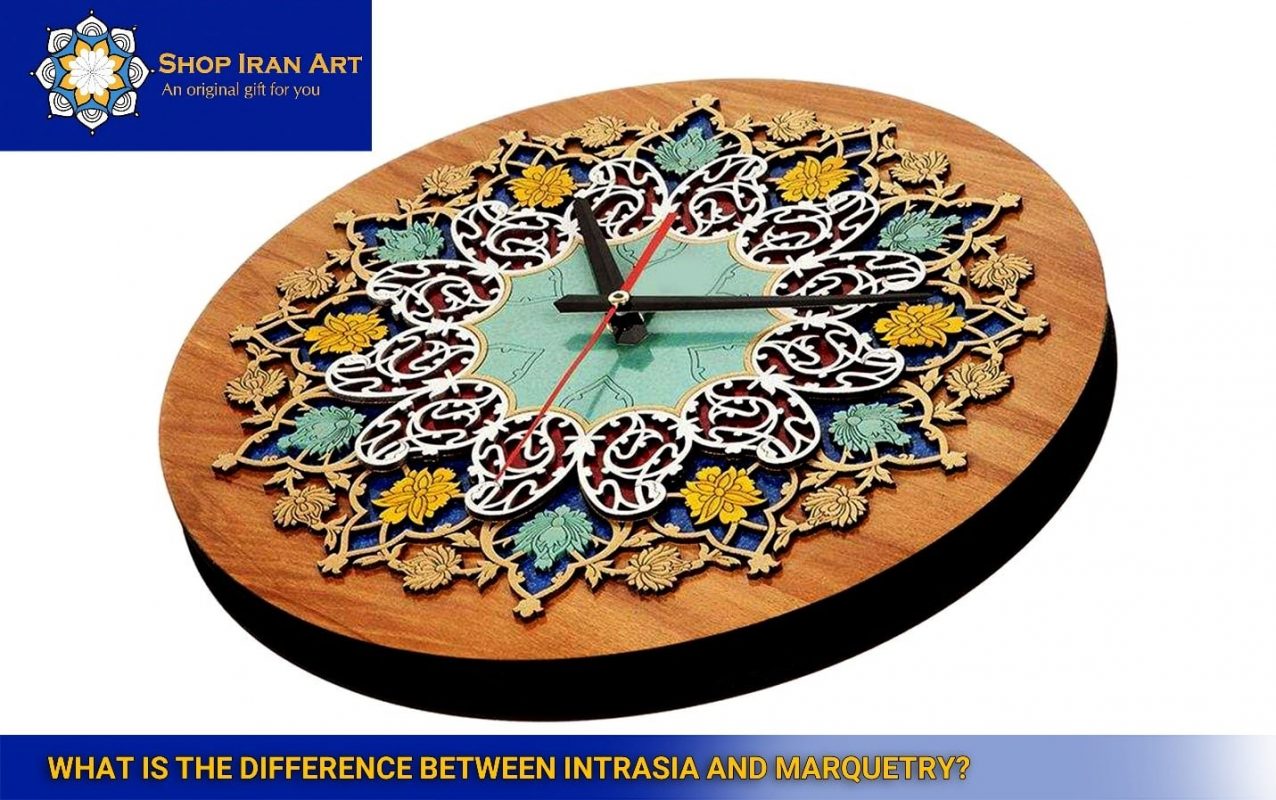
What to call marquetry?
Marquetry is a type of inlay, a surface finishing technique by gluing decorative elements of veneer onto a wooden base.
What is the difference between intarsia and marquetry?
Intarsia is used to decorate luxury furniture, and door panels, and create wooden works of art. Marquetry is one of the directions of mosaic inlay. As a basis for this type of decorative finish, smooth wooden surfaces or plywood are used.
What are intarsia and marquetry inlays?
Some types of inlay have separate names: intarsia - wood inlay on wood, and marquetry - veneer inlay. Marquetry is a mosaic made of wood, the selection of different pieces of veneer that make up a particular pattern, gluing them together and sticking them on a flat base.

